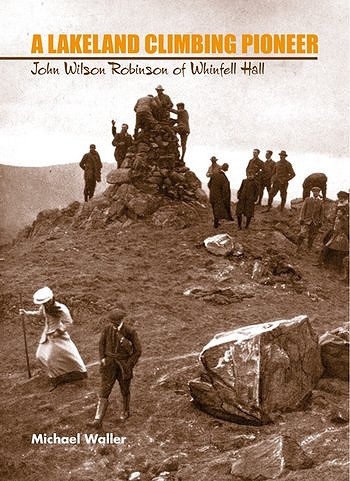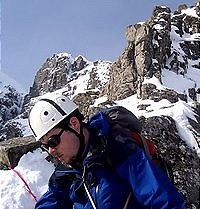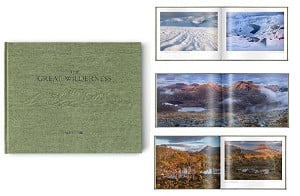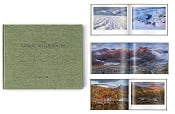

Who was John Wilson Robinson? Most climbers with an interest in history will have heard of W.P. Haskett-Smith, the legendary young man who is often credited as having invented rock climbing with his solo ascent of Napes Needle in 1886. Without wishing to take away the credit Haskett-Smith deserves for his early development of climbing, this biography demonstrates that as a local farmer who knew the fells intimately, Robinson was perhaps the more complete man of the Lakeland mountains. In his close partnership with Haskett-Smith that lasted almost from the start of the younger man's visits to Wasdale, together they achieved some extraordinary things. Robinson is perhaps best known for his familiarity with Pillar Rock, the earliest haven of climbing in England. By the time of his death in 1907, he had climbed the Rock over one hundred times by many different routes, and introduced countless others to its complex and wild ways.
Michael Waller's biography of the great man is unique. Other books on Lakeland climbing history have much to say on Robinson, but the focus is invariably on Robinson the climber, not Robinson the man. In exploring many of the aspects of his life, put in the context of the time, a far more complete picture is gained and I think the careful and detailed research that has produced this book has made some real insights.
This book goes far beyond listing his climbing achievements, impressive though they are. Fascinating details of his life as a farmer, businessman and pillar of the local community are interwoven with the story of his exploits in the mountains. He is depicted as a loyal friend who was almost universally loved by the cragsmen who came to visit Wasdale Head--a man who would take novices under his wing and was especially safe and conscious of his responsibilities as an experienced leader. His relationship with other key figures of the day, such as O.G. Jones, the Abraham brothers, and Aleister Crowley are analysed. Attention is also given to his role in the formation of the Fell and Rock Climbing Club. His position as a joint Vice President says much for the respect and admiration he commanded within the Lakeland climbing community.
Robinson's contribution to the early development of climbing is looked at in detail. It becomes clear that his significance was not limited to the ascents he personally participated in, although many of these were of great importance. Robinson was there at the first ascents of routes such as Steep Ghyll, Shamrock Gully, Moss Ghyll, and Kern Knotts Chimney. As a beloved mentor and the unquestionable authority on the fells, he nurtured many climbers who would later go on to make significant ascents in their own right. Robinson is also shown to be, in many ways, the personification of the society of equals the early climbers created for themselves.

The appendices are of great interest, particularly to the historian. A complete transcript is given of Cecil Slingsby's speech at the unveiling of the Robinson's Cairn plaque, as is the record of memorial, deposited in a bottle concealed in the cairn. In fact, throughout, the author has obviously gone to some effort to make the book as useful as possible to both general readers and historians looking for sources.
This book is an objective biography, and gives much depth to Robinson's character in describing the ways in which his life took a turn for the worse after he had to give up his family's farm. One section shows how his investments went badly wrong and one of his brothers accused him of gambling what little funds the family had left. Robinson's declining luck and health in his final few years are described intimately. The reader finishes the book with a profound sense of having got to know the man in a way that has never before been possible.
It's a real pleasure to read. I read it from cover to cover in a single sitting, because the subject matter is fascinating and handled in such an engaging way. In creating a biography covering many facets of Robinson's life, interweaving it with other aspects of the history of both Lakeland and climbing during the period, Michael Waller has written a book that should be read by everyone with an interest in the history of mountaineering in this country. The research is thorough, covering many peripheral areas of interest and value, as well as the issues directly surrounding Robinson's life. For the historian, ample evidence and complete citations are supplied. There are also plenty of photographs, many of which were taken by the Abraham brothers.
"A Lakeland Climbing Pioneer: John Wilson Robinson of Whinfell Hall" gives a fascinating insight into the early years of British climbing and greatly adds to the body of work on the period that already exists.
Published by : Bookcase
Published Date : March 2008
Pages :148
Format :140mm x 210mm paperback
Illustrations :Black & white photographs and illustrations
ISBN :9781904147350
£10.00

Also by Alex at UKClimbing.com: Clean Water On The Go: SteriPEN Adventurer










Comments